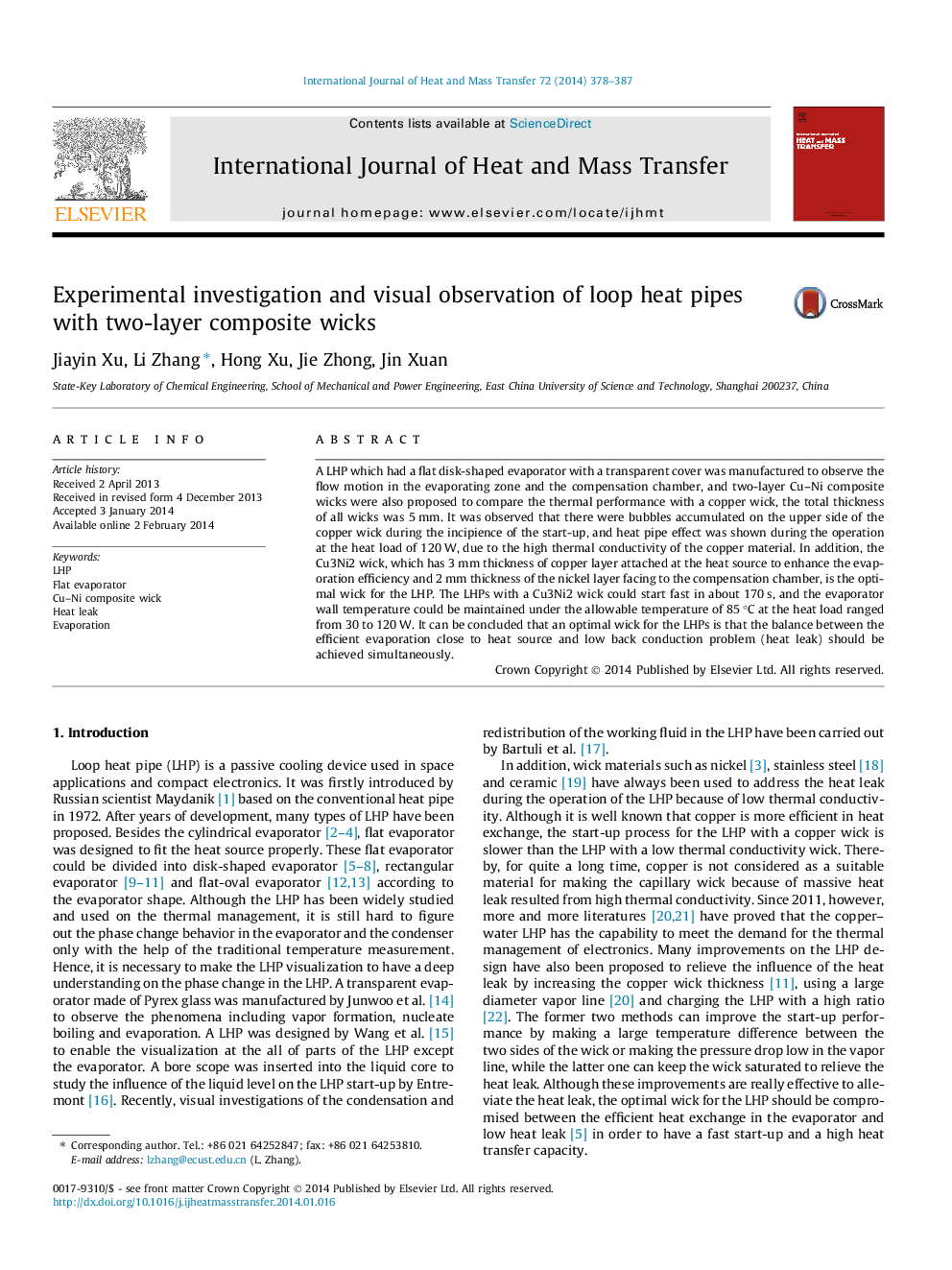| Article ID | Journal | Published Year | Pages | File Type |
|---|---|---|---|---|
| 7057276 | International Journal of Heat and Mass Transfer | 2014 | 10 Pages |
Abstract
A LHP which had a flat disk-shaped evaporator with a transparent cover was manufactured to observe the flow motion in the evaporating zone and the compensation chamber, and two-layer Cu-Ni composite wicks were also proposed to compare the thermal performance with a copper wick, the total thickness of all wicks was 5 mm. It was observed that there were bubbles accumulated on the upper side of the copper wick during the incipience of the start-up, and heat pipe effect was shown during the operation at the heat load of 120 W, due to the high thermal conductivity of the copper material. In addition, the Cu3Ni2 wick, which has 3 mm thickness of copper layer attached at the heat source to enhance the evaporation efficiency and 2 mm thickness of the nickel layer facing to the compensation chamber, is the optimal wick for the LHP. The LHPs with a Cu3Ni2 wick could start fast in about 170 s, and the evaporator wall temperature could be maintained under the allowable temperature of 85 °C at the heat load ranged from 30 to 120 W. It can be concluded that an optimal wick for the LHPs is that the balance between the efficient evaporation close to heat source and low back conduction problem (heat leak) should be achieved simultaneously.
Related Topics
Physical Sciences and Engineering
Chemical Engineering
Fluid Flow and Transfer Processes
Authors
Jiayin Xu, Li Zhang, Hong Xu, Jie Zhong, Jin Xuan,
